January 28, 2008 lecture
Embryology Biology 441 Spring 2008 Albert Harris
Symmetry
Symmetry is the key concept for understanding shape formation(The index of our textbook does not contain the word "symmetry",
although "asymmetry" has 6 page references
Physics, crystallography, chemistry, engineering and mathematics developed and used symmetry concepts, but biology hardly at all
And there are lots of good books on symmetry,
and how to apply symmetry to biology, physics, chemistry and other fields

* There are more different kinds of symmetry than you realize.
(and embryologists probably should be inventing new kinds!)
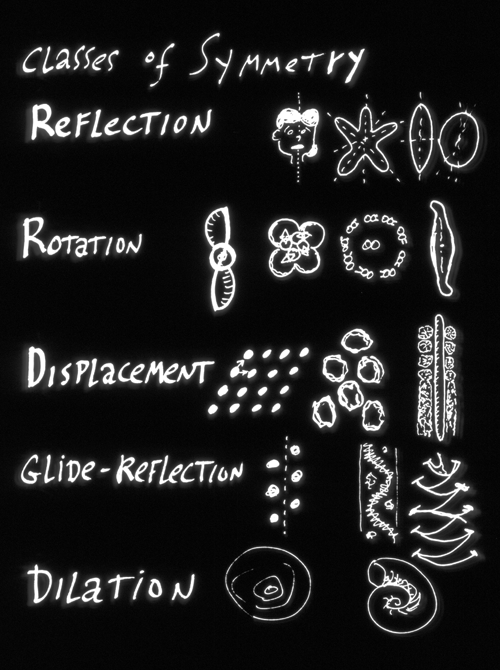
* Causal mechanisms often have their own symmetry.
(you won't be tested on the fact immediately below , but it should interest you)
** The conservation of energy is caused by a certain symmetry of physical laws; the conservation of momentum, charge etc. each result from certain symmetries in physical laws! (very deep stuff)
* A fundamental rule of Physics claims that (almost always!) the results of a set of causes have the same symmetries, or more, than the symmetries of the causes did. "Curie's Principle "
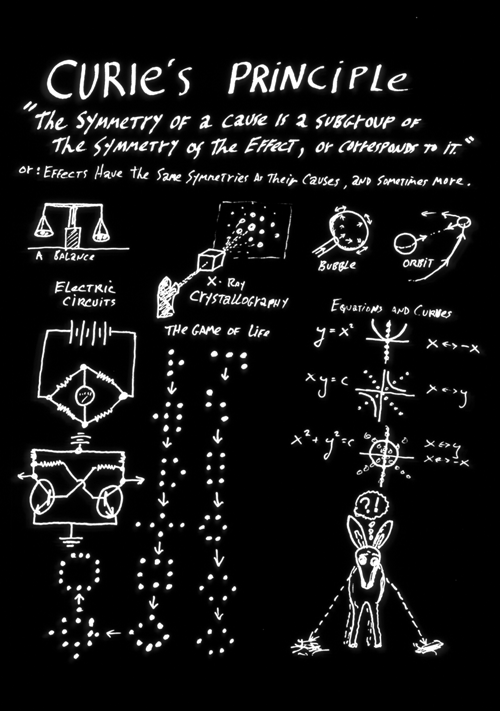
* The biggest difficulty is for causes to make shapes and structures become LESS symmetrical, but always the same, not just random.
* Breaking a sheet of glass produces fragments that don't have any particular displacement symmetries;
Bursting a spherical bubble also breaks symmetry, because the fragments have NO symmetry.
* Again, and again, in developmental biology, the problem is to change embryos or organs from one symmetry to another symmetry, and the big difficulty is to make them less symmetrical, but not random, and continuing to have certain symmetries, but selectively eliminating others.
What different kinds of symmetry can we find in the following?
-
The letters A B C D E K L T U V
What additional kinds of symmetry are in the following?
The letters H I
The letters N S Z
The letter O (if it were circular)
The letters M W what about a zig-zag line?
A ladder? Or the letter E if it continued on top and bottom
A centipede
A starfish
A jelly-fish
A nematode worm
A series of concentric circles
A snail shell
The vertebra (bones of a human or other vertebrate backbone)
Some of the most important kinds of symmetry.
(Mirror Image) Reflection SymmetryRotational Symmetry
Displacement Symmetry
Glide Displacement Symmetry
Dilation Symmetry
(which perhaps should have been called "Magnification Symmetry")
The following have combinations of symmetries: Please figure out what they are.
A snail shell
A diatom shell
Ribs ?
Vertebra ?
The arrangements of fish scales, reptile scales, & bird feathers?
Snake color patterns ?
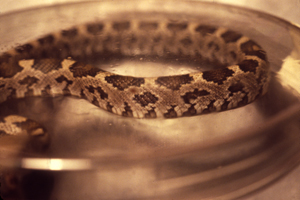
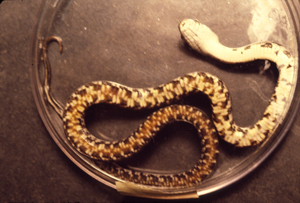

Please invent some problematical examples of biological symmetry.
Why are soap bubbles spherical?
What is the symmetry of the air pressure inside?
What is the symmetry of the "surface tension" (contractile force) in the soap film surface of the bubble.
If the causes of a shape are spherically symmetrical, then what shape will be the objects these causes create?
What causes (many) balloons to be spheres?
To cause a balloon to be less symmetrical than a sphere, then you would need to change the symmetry of what?
Answer: the tension in the rubber need not have spherical symmetry; his tension can be srongre in one direction than in the direction perpendicular to that direction
What can we conclude about the reasons why the oocytes of many species of animal are spheres?
NO, the are not made of soap!
(Witches are made of wood! And therefore weigh the same as a duck! M. Python, etc.)
What can we conclude about cleavage and blastula stages?
What about the symmetry of the eyeball, the cornea and lens??
a Dictyostelium slug? a stalk? a mass of spores? (an individual spore?)
The symmetry of a flagellar axoneme??
In the game of life, or other cellular automata, do the patterns become less symmetrical? Or more symmetrical? Test it on the web site program
The following is an example
![]()
How would you have to change the rules of a cellular automaton, in order to make it able to "break" symmetry?
As embryos develop to form the anatomy of the body,
does symmetry increase? (are new symmetries created?)
Or does symmetry decrease ("breaking" of some symmetries)?
What symmetry is broken when a teleost fish egg's cytoplasm flows to the animal pole?
(It starts out with spherical symmetry, and decreases to radial symmetry = an infinite number of planes of mirror image symmetry, intersecting along a single line)
What symmetry is broken when a frog or salamander gastrulates, forming its blastopore below the equator on one side?
(It starts out with radial symmetry, and this gets decreased to one plane of mirror image reflection symmetry)
What symmetry is broken when a bird or reptile embryo develops its anterior-posterior axis?
(It starts out with radial symmetry, and this gets decreased to one plane of mirror image reflection symmetry).
-
...when a mammal blastocyst develops an inner cell mass?
(It starts out with spherical symmetry, and decreases to radial symmetry)
...when a mammal inner cell mass develops and anterior-posterior axis?
(It starts out with spherical symmetry, and this gets decreased to one plane of reflection symmetry)
...when neurulation occurs?
(It develops displacement symmetry along the anterior-posterior axis)
...when segments develop along the anterior-posterior axis?
(The displacement symmetry along the A-P axis gets reduced from displacement by any distance, to displacement symmetry only by certain distances)
...when aggregating Dictyostelium amoebae form a slug?
(The amoebae were randomly distributed, but then form an aggregate with radial symmpetry;
but while it is crawling the slug has one plane of reflection symmetry.)
...when a Dictyostelium slug forms a fruiting body?
(Radial symmetry is restored)
...when individual Dictyostelium cells become spores?
(The spores have axial symmetry, plus [I think!?] an additional plane of reflection symmetry perpendicular to the axis of symmetry [like human red blood cells do, for example])
Some other species might have spores with spherical symmetry.
...when embryonic regulation occurs (for example, when a
Dictyostelium slug is cut into many pieces)?
Notice that this amounts to a kind of dilation symmetry!
Although most of the anatomical structure of our body has one plane of reflection symmetry, several of our internal organs do not have this reflection symmetry. They have NO symmetry.
Mutation of a certain human gene causes Kartagener's syndrome (the heart is on the right in half such people)
This set of facts seems to prove two conclusions:
1) That the mechanism for "breaking" reflection symmetry in human development normally uses the lack of reflection symmetry of the flagellar axoneme (which lacks reflection symmetry, although ironically it has 9-fold rotational symmetry).
2) When embryos are deprived of this normal means for breaking reflection symmetry, then they still manage to break that symmetry, but they make a random choice.
Notice how our textbook reduces this phenomenon to a matter of identifying the genes and proteins!
The following is a joke! Let's invent a new kind of symmetry and a syndrome!
"Molecular-explanation symmetry" All biological phenomena are symmetrical with respect to changes in the names of the molecules and genes that cause them (signalling molecule, membrane receptor, transcription factor). Most developmental biologists seem to suffer from Kartagodelenda's Syndrome [If you know Latin, and who Cato was, this is also a joke] which is a genetic inability to notice any other phenomena in embryonic development, besides gene transcription, secretion of signalling molecules, binding of signals to receptors, and activation of transcription factors. All chapters in the textbook are therefore left the same when you change the names of the specific protein and genes. This symmetry corresponds to the Law of Conservation of Gullibility.
END OF JOKE Resume thinking.
In terms of symmetry, or changes in symmetry, either breaking symmetry, or increasing symmetry, or conserving symmetry, consider what happens in each of the following:
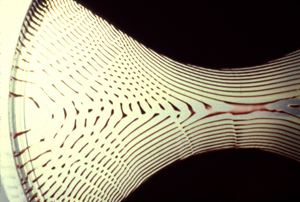
Reaction-diffusion systems, as were invented by Turing.
Answer: These break displacement symmetry, but produce a pattern that still has some displacement symmetry, but only for certain distances. The mechanism starts with material having displacement symmetry for any amount of displacement; and the resulting pattern has displacement symmetry for only certain distances, which are the wave-lengths of the pattern generated.
Embryonic regulation, as when Driesch separated the first 2 or the first 4 cells of echinoderm embryos. (or when two one-celled stage embryos are combined)
Hint: The first thing the fragments do, after separation, is to become spherical.
Then regulation allows formation of half-size or quarter-sized embryos, which can be regarded as examples of dilation symmetry.
When the location of sperm entry controls the site where the blastopore will form,& the future bilateral axis of the body.
Answer: This breaks radial symmetry, but leaves one single plane of reflection symmetry. Notice how an exterior stimulus serves somewhat the same function as the axoneme asymmetry served in the phenomenon that fails to occur in people who have Kartagener's Syndrome.
Conjoined twins ("Siamese twins") always are joined along a plane of reflection symmetry (sometimes with a small amount of rotational symmetry)
Figure out what this tells us about the underlying control mechanisms of normal development, and about the causes of this kind of twinning?
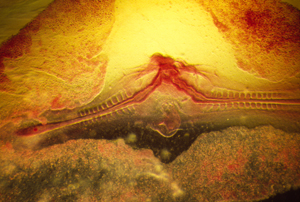
Answer : This is a VERY deep question. Don't worry if you can't solve it. Those of you who can think of explanations, then please tell me what they are. An interesting fact is that one twin (of a conjoined pair) "normally" has its heart asymmetry backwards, in the same way as half of people who have Kartagener's syndrome
-----------------------------------------------------------------------------------------------------
Symmetry Concepts
Shapes can't be less symmetrical than their causes.A soap bubble can't help being spherically symmetrical, because the air pressure inside has spherical symmetry, and the tension of the soap-film surface has axial symmetry.
In order for a soap bubble to become less symmetrical, it would be necessary either for the inside pressure or the tension of its surface to become less symmetrical; OR for some other force to act - some other force which is less symmetrical.
The shape produced by the less symmetrical force would have its (reduced) symmetry.
Early embryos of vertebrates all (?) have axial symmetry, which is an infinite number of planes of reflection symmetry, that all intersect along the "animal vegetal" axis.
During development, this very large amount of initial symmetry is reduced by various methods.
Curie's principle predicts that systems can't reduce their symmetry! (It's a fundamental impossibility.)
Of course, Curie knew that vases can easily break into random fragments; but those fragments have no symmetry, and no consistency. You get different shapes ever time you break something.
Imagine a vase that, when you drop it, always breaks into pieces that have reflection symmetry!
That's impossible, Curie says, and so does your common sense. If it did happen, you would expect to
find something in the causes that has reflection symmetry.
The "Turing Mechanism" is a way to generate reduced degrees of displacement symmetry, without just producing randomness. Unfortunately, it doesn't produce dilation symmetry.
Imagine embryos that can be split into fragments, and each fragment becomes a "scale-model" of normal embryos - or in which two or more embryos can be fused together, and produce bigger than normal embryos! (In the sense that Euclidian geometry uses the word "similar", versus "congruent")
The embryos of many kinds of animals use some kind of external signal to reduce their symmetry from axial symmetry to one plane of reflection symmetry Birds use gravity; frogs use the location where the first sperm enters, and if it enters at the ďanimal pole, then they use gravity.
Mammal embryos go from spherical to axial symmetry by the inner cell mass aggregating (randomly?)
to one side of the blastocyst stage of the embryo. It isn't known how they get from axial to bilateral symmetry, but the reduction from bilateral symmetry (one plane of reflection symmetry) to having the heart and intestines lose even that symmetry is controlled by the asymmetry of flagella!
A certain genetic defect results in half of people having their aorta on the right side, and their whole heart and intestines being mirror-images of those structures in normal people (Situs Inversus viscerum)
The embryos of flies go from spherical to bilateral symmetry before fertilization, during the development of the oocyte (egg cell), which gets mechanically molded by "nurse cells".
The Anterior-Posterior axis of nematodes is determined by where the sperm enters the oocyte, much like it is in amphibians. This was discovered in Nematodes by Prof. Bob Goldstein, of the UNC Biology Department, before he came here!
Hardly any embryologists think about things this way, but many embryological phenomena amount to methods for creating or changing symmetry, usually reducing it in a controlled way, that gets stimulated either by external stimuli like gravity or locations of sperm entry, or by some kind of amplification of random fluctuations. Turing's set of hypothetical chemical reactions are an example of how random fluctuations can induce formation of spatial patterns that have displacement symmetry. Another example are Liesegang rings; which have the advantage of actually occurring, but the disadvantage that thousands of research papers have not yet succeeded in discovering exactly why the gaps form between the rings of insoluble silver chromate, or other salts. (There are hundreds of combinations of ions that will generate Liesegang rings, when diffusing toward one another in a gel.)
It's as if the human mind has some kind of conceptual blind spot about pattern generation.
Dilation symmetry is also very important for embryology. That's what embryonic regulation amounts to. Although Driesch certainly didn't think of it that way, the unexpected phenomena that he discovered is an example of dilation symmetry: the halves and quarters of echinoderm embryos develop into "scale models" of normal larvae. Therefore, the causal control mechanisms have the property of dilation symmetry. (Instead of the mind-like property that Driesch thought his results implied.) Likewise, even greater dilation symmetry occurs in Dictyostelium slugs and fruiting bodies.
Notice that dilation symmetry is lacking in Turing's chemical reactions and also those that cause Liesegang rings. In other words, putting your chemicals in a smaller dish won't result in formation of the same total number of (proportionally smaller) rings and spaces between rings.
The point of Wolpert's "French Flag" idealized Gallic flatworm, with the red white and blue differentiated cell types, was to suggest a mechanism that would or could have dilation symmetry. If you restrict diffusion to one dimension, then diffusion gradients will have dilation symmetry. But it was no accident that he chose a geometrically simple flag pattern. It allows him to finesse the problem of perpendicular dimensions. In other words, when someone cuts the flag (worm) into halves or quarters, some mechanism would need to reshape each piece so that it has the original ratio of length to width, before getting going on the linearization of lengthwise and cross-wise gradients. This reshaping question gets almost no attention, since nobody has a clue how to solve it. At most, they assume reshaping has some entirely different mechanism than regulation of borders between red white and blue differentiated cells. That's because their boundary regulation mechanism (diffusion gradients) has no evident way to produce reshaping. But if it can reshape edges, why couldn't it remake boundaries? Anyway, only in one dimension to diffusion gradients gravitate to linearity. There is a "Nova"-type TV special in which Wolpert uses a sandbox to represent diffusion gradients. Again, this fudges key issues, because poured sand gravitates to linear slopes because it has a limited "angle of repose", which is equivalent to having zero diffusion up to some limit of steepness, and then suddenly a very high diffusion rate, until that limit is restored. That's why Ant Lion holes have linear sides.
Physicists and mathematicians tend to think they are smarter than biologists, but really their subjects are merely simpler. Richard Feynman said: "The physicists got there first, and they took all the problems they could figure out how to solve, and they drew a line around them, and they called those problems "Physics". And they called all the other problems, that were too hard for them to solve,"Chemistry", "Biology" etc. Everything Feynman wrote is worth reading, I think..
Physicists tend to think very hard about profound problems; they try to clarify issues, and look for analogous questions that have already been answered. About symmetry, they think very hard.
Many diverse embryological phenomena come into focus when viewed in terms of symmetry.
links to some other sites
http://en.wikipedia.org/wiki/The_Feynman_Lectures_on_Physics
http://en.wikipedia.org/wiki/Noether%27s_Theorem
http://math.ucr.edu/home/baez/noether.html
http://en.wikipedia.org/wiki/Symmetry_in_physics (this one isn't so good)